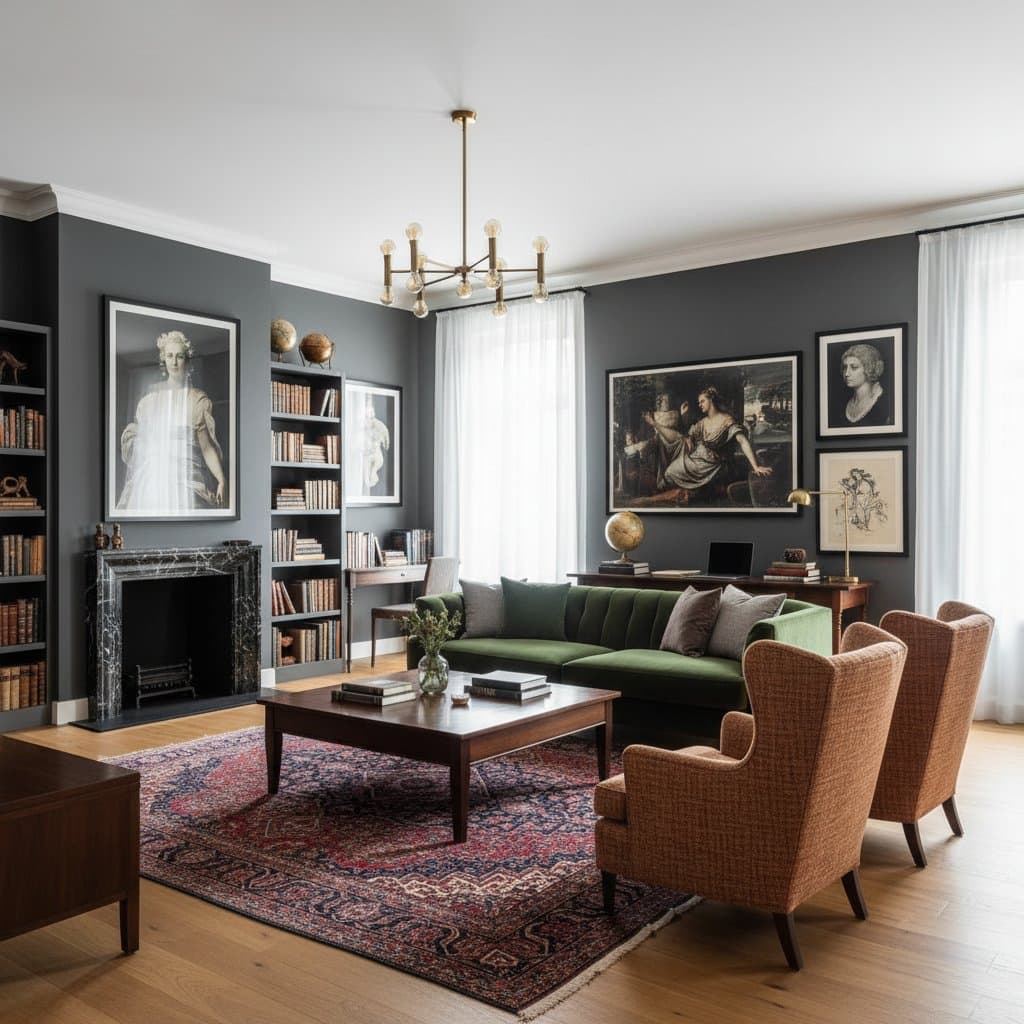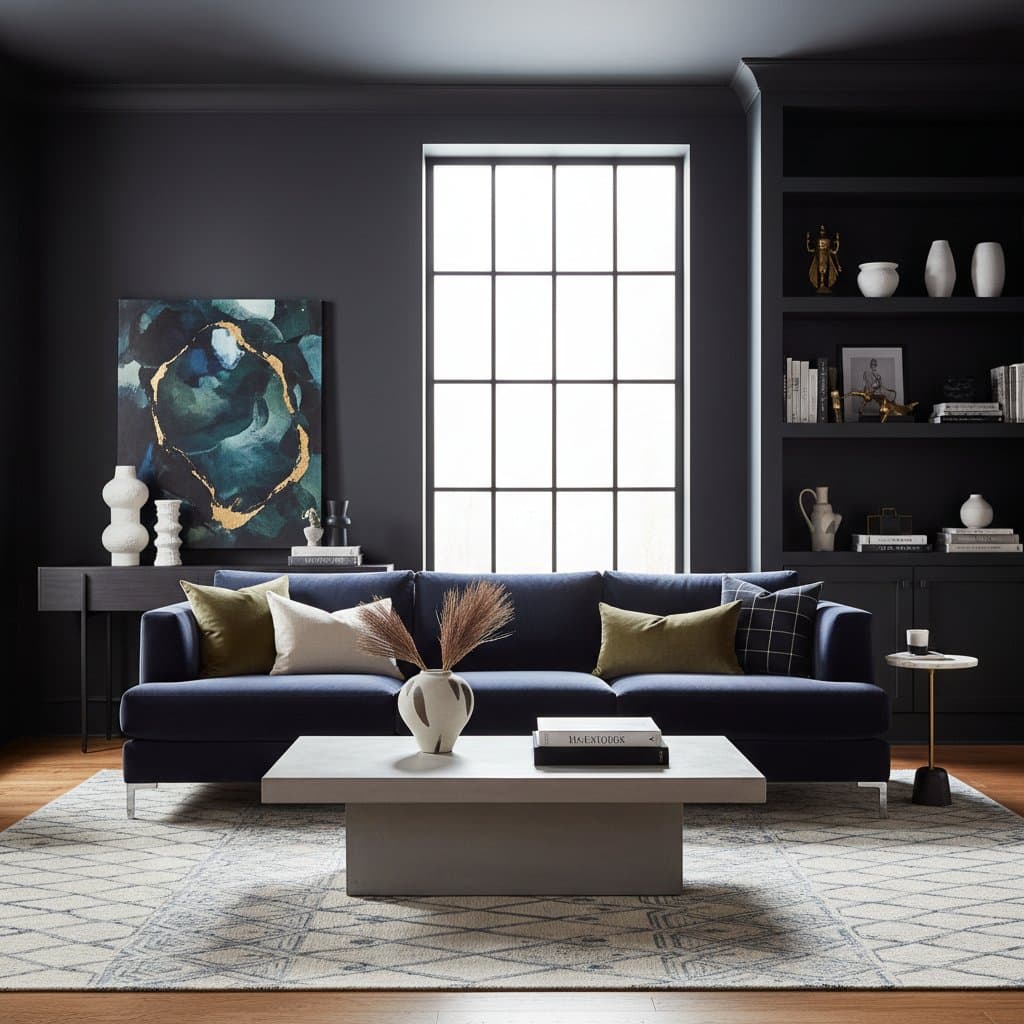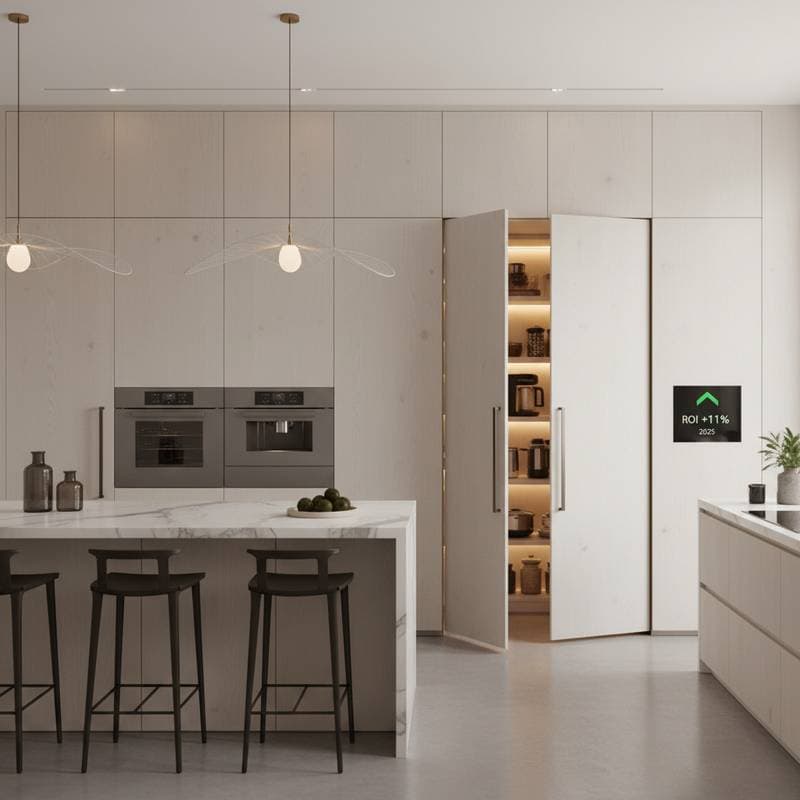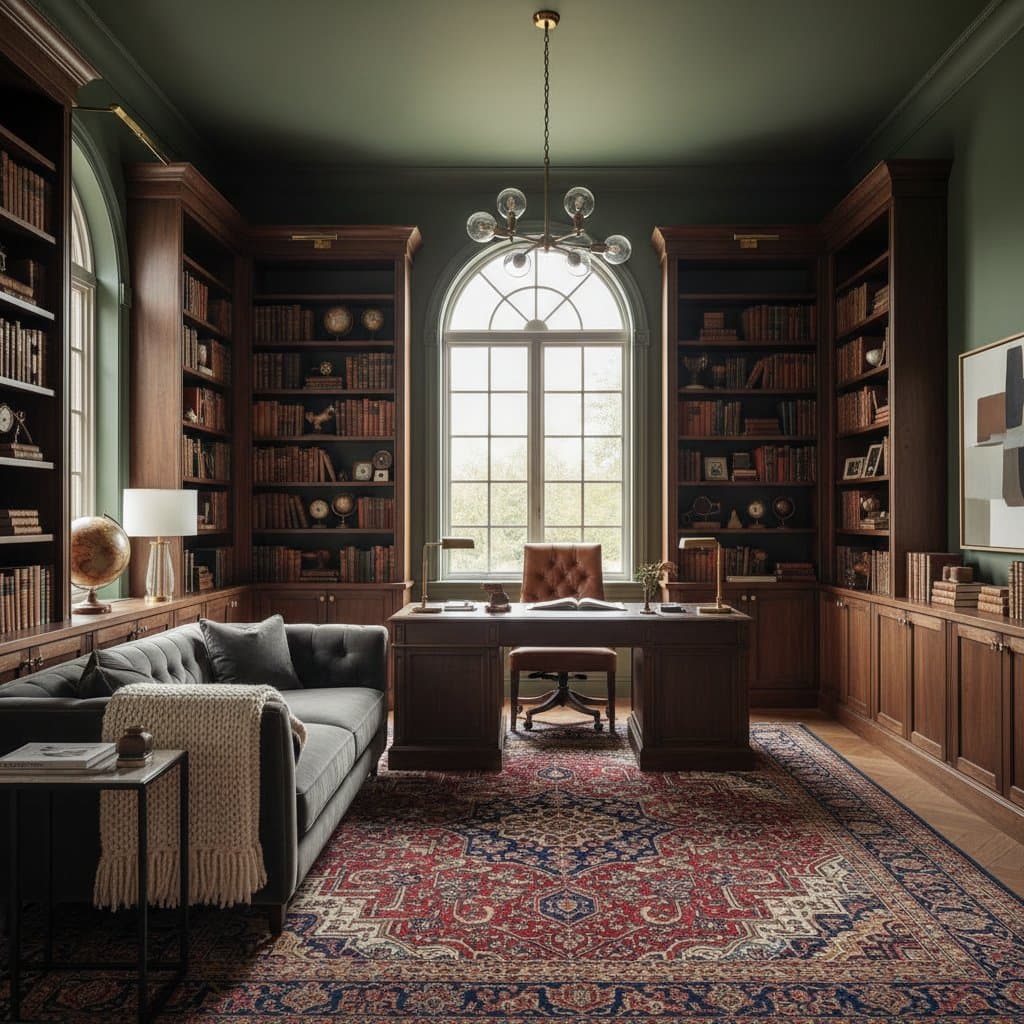The Rise of Moody Dark Walls in Home Sales
Dark wall colors transition from interior design inspiration to practical application in residential properties. Shades like deep charcoal, navy blue, and forest green appear increasingly in real estate listings and open houses. Homeowners discover that these hues foster a perception of depth and sophistication, qualities that pale walls often fail to convey, ultimately expediting the sales process.
This approach suits property owners seeking contemporary aesthetics without incurring the expenses of comprehensive renovations. Sellers preparing homes for the market benefit particularly, as these colors help properties differentiate in competitive environments.
Advantages and Drawbacks of Dark Walls
Dark walls offer several benefits that enhance a home's marketability.
Advantages
- Establish a luxurious, dramatic ambiance that elevates the overall interior.
- Conceal minor imperfections on walls more effectively than lighter paints.
- Highlight artwork, furniture, and lighting fixtures, creating focal points.
- Contribute to perceived higher value through strategic pairing with light trim or furnishings.
However, challenges exist that require thoughtful consideration.
Drawbacks
- Potentially constrict the perceived size of smaller spaces.
- Necessitate precise lighting to prevent an overly dim atmosphere.
- Reveal dust accumulation and minor scuffs more prominently.
- Complicate subsequent repainting to lighter tones due to coverage demands.
Executing the Project: DIY or Professional Assistance
Applying dark paint requires meticulous attention to achieve flawless results. Uneven application or visible tool marks become evident on darker surfaces, underscoring the importance of technique.
DIY Assessment
The complexity ranges from moderate to high. Allocate four to eight hours per room, encompassing preparation, painting, and cleanup.
Essential Tools
- High-quality rollers and angled brushes for smooth application.
- Painter's tape, drop cloths, ladder, and primer to ensure clean edges and protection.
Potential Pitfalls
Streaks, seams, or imprecise lines can result in an unprofessional appearance.
Circumstances for Hiring Professionals
- When dealing with high or sloped ceilings.
- Over textured surfaces or vibrant existing colors.
- In preparation for selling, where impeccable finish influences buyer perceptions.
Professionals provide uniform coverage, sharp lines, and efficient completion, justifying the investment for high-stakes scenarios like pre-listing preparations.
Upkeep and Durability
Dark walls demand routine, gentle maintenance to preserve their appeal. Wipe surfaces monthly using a microfiber cloth, and clean lightly with a mild detergent solution as necessary. Steer clear of abrasive pads that may compromise the paint's sheen.
Quality paints endure five to seven years under normal conditions. Flat or matte sheens mask imperfections effectively but attract marks readily. Opt for satin or eggshell finishes in areas with frequent activity to enhance resistance to wear.
For sellers, applying a fresh layer prior to listing ensures walls appear vibrant in photographs and during viewings, bolstering first impressions.
Regional Considerations
Environmental factors influence paint choices and longevity. In humid coastal zones, select formulas resistant to mildew growth. Arid or elevated locations benefit from UV-stable paints to minimize fading from sunlight exposure.
Professional labor rates fluctuate by location. Urban areas typically range from four to six dollars per square foot, whereas rural settings approximate two to three dollars. Municipal regulations seldom limit interior colors, though condominium associations or historic neighborhoods may enforce specific guidelines.
Regional lighting conditions also play a role. Properties in overcast areas require robust artificial illumination to counteract the intensity of dark walls.
Return on Investment and Market Impact
When implemented thoughtfully, moody walls heighten buyer engagement. Real estate professionals note that accentuating spaces with deep colors distinguishes listings in digital marketplaces. Images gain warmth and definition against darker backgrounds, drawing viewer attention.
The financial return manifests primarily through quicker transactions rather than elevated sale prices. A well-executed dark room conveys meticulous upkeep and stylistic sophistication, resonating with prospective buyers.
Restrict dark applications to key areas such as living rooms, dining spaces, or master bedrooms to maximize appeal without overwhelming the home.
Essential Safety Measures
Prioritize health and safety during painting projects. Choose low-VOC or zero-VOC paints to minimize volatile emissions. Ensure adequate ventilation throughout the application and drying phases.
Equip yourself with gloves and protective eyewear for sanding or priming tasks. Secure ladders firmly and avoid stretching beyond safe reach.
For older structures, test existing paint for lead content before sanding. Engage certified experts for safe abatement if lead is present.
Frequently Asked Questions
Do dark walls diminish room size?
Poor lighting may create this effect, but ample illumination paired with light trim imparts depth rather than constriction.
Which finish suits dark paints best?
Eggshell or satin provides an optimal blend of durability and visual elegance. Flat options deliver richness yet prove prone to visible wear.
Can dark paint elevate home value?
It facilitates swifter sales via enhanced aesthetics, though it seldom directly influences formal appraisals.
How many coats are required for dark colors?
Typically two, or three when covering lighter bases. A dedicated primer streamlines the process and reduces layers needed.
Steps to Implement Dark Walls for Optimal Results
Begin by selecting shades that harmonize with existing elements, consulting color samples under various lighting. Prepare surfaces thoroughly: clean, repair flaws, and apply primer for adhesion.
Test small areas to confirm coverage and tone. Proceed with even coats, allowing full drying between applications. Balance dark walls with reflective accents like mirrors or metallic hardware to amplify light.
Upon completion, stage the space to showcase the transformation, emphasizing how these updates position the home as a modern sanctuary ready for new owners.







